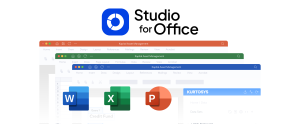We’ve been told a lot of things about millennials in the recent past. How they’re lazy. How they’re not lazy. How they are killing certain industries. And how they don’t have any money.
There is a perception that if you’re a millennial, the topic of investment isn’t something that is regularly on your mind. When it comes to money matters, your focus is more likely on wondering how you’re ever going to afford to buy a house rather than a pension pot.
This isn’t the whole truth though. The fact is that you can’t characterise an entire generation with such a broad brush, and there are plenty of millennials out there who are considering their futures. The millennials that are thinking about investment, though, take a very different approach to previous generations.
While the baby boomers with money to invest are dealing with asset managers and IFAs that come from their own generation, millennials are more likely to look to technology rather than humans for advice and help with investment.
After all, they’ve grown up in a world where convenience is king and financial services have become increasingly digital-led. With many institutions embarking on digital transformation projects right now, it is important that it isn’t just the decades-old back office processes that are overhauled but the customer-facing ones too. So as asset management plunges into an increasingly connected world, here are some of the key considerations for businesses in this industry.
Robo-advisors
One of the most significant developments in asset management in recent years has been that of the robo-advisor – digital tools that require users to input basic information and provide financial advice – and it’s the millennials who are using them most.
As I wrote in Bobsguide recently, the world of investment can be mired in opaque language that can be difficult for inexperienced investors to get their head around. In a sense, then, it is refreshing to see that many of the robo-advisor platforms that have sprung up in recent years – Nutmeg, Wealthfront, WiseBanyan and the like – are much more approachable.
The websites are interactive, often asking users to think about their financial goals and using multiple-choice formats to glean the relevant information efficiently. Very often they replicate features from cutting-edge digital services like Netflix, Facebook and Twitter to make the user feel at home.
Active vs Passive
But of course, these platforms operate in a very different way to which fund management has been traditionally done. Millennials are much happier to use these passive platforms – which due to their digital nature tend to be very cost efficient to run – and don’t seem to desire the human touch provided by active asset management services.
It’s a trend that is going to have some unsettling effects and requires fund managers to think very carefully about their strategy going forward. To compete with the robo-advisor platforms’ low fees, more traditional fund managers are going to have to streamline their operations.
While MiFID II regulations concerning fee transparency and investor protection will, of course, also dictate strategies in this area, digital provides the best options for asset managers who need to keep costs down and ensure they are providing clients with real-time data on their investments’ performance.
Data visualisation
It isn’t just the timeliness of the data that will matter to a millennial customer base either. It’s how it is presented that will really count – this generation is not interested in trying to decipher complex factsheets. Digital natives are more familiar with clear, compelling data visualisations and asset managers need to catch on to this too.
There are thousands of examples of infographics to be found online – good and bad – but to really connect with this audience fund managers have to create punchy, easy-to-understand and aesthetically appealing visualisations for millennial customers. It will help to retain their interest and loyalty.
Marketing and social media
Of course, brand loyalty isn’t something millennials are particularly associated with, certainly in comparison to the baby boomer generation. But now more than ever, fund managers need to consider how they connect with their target audiences throughout the sales funnel. Marketing is key – asset management firms need to do more than simply sponsor a few sporting events if they want to get noticed. They need to actually build a brand that fits with the values of millennials.
It’s important, then, for fund managers to pay attention to their social media channels. Millennials consume so much content – news, entertainment and so on – through these channels so it makes sense to focus brand-building efforts in this area. Disseminating useful information (again, in infographic form is ideal) to potential customers to help them better understand investment is just one part of it, though. They need to think about engaging in industry conversations, running interactive campaigns such as competitions and building up a healthy number of likes and followers too.
White Paper: Fund Marketing – A Millennial’s Perspective
 For more information on a Millennial’s Perspective on Fund Marketing, you can download our white paper, where we look at:
For more information on a Millennial’s Perspective on Fund Marketing, you can download our white paper, where we look at:
• Infographics and Financial Data in social media
• Fund Managers and Advertising
• Robo-Advisors – seen from the eyes of a millennial



